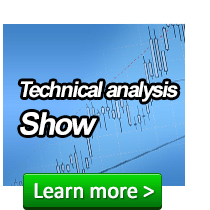There are loads of strategies for the trading binary options, forex or cryptocurrencies that can be grouped into two categories: fundamental a technical.
Which of them is more efficient?
Is it possible to use technical analysis without using fundaments? What do the two terms “technical” and “fundamental” mean? If you read our today’s article, you will get answers not only to these questions.
Technical analysis

If you are a trader using graphs, trend lines, pin bars, indicators, Fibonacci lines etc. you are regarded to as a technical trader. In terms of binary options, these strategies assume that the specific formulas and monitoring techniques boost our chances to forecast in which direction the trend is going to move. These strategies are used by the vast majority of binary options traders.
Fundamental analysis

This type of strategy can be efficiently applied for trading shares, as well as cryptocurrencies. See Fundamental analysis part 7.
Which one to choose
If you ask which of the two analyses is better my question is “both, depending on the situation”. They both have some specific features. The technical analysis works better in the short run. Hence, if you are a daily trader the technical analysis should help you more. On the contrary, the fundamental analysis performs better in the long run.
All depends on the type of trader or, in other words, the way you want to trade.
As a forex trader you should not rely on one analysis only. Trading technically doesn’t mean ignoring fundamental factors. If you are a technical trader and want to be informed of the fundamental aspects I recommend that you watch forexfactory.com, offering all important macroeconomic news. During periods of increased volatility your technical analysis might not show you the correct picture.
The minimum each trader should know of the technical analysis is: Never trade when important (red) news are being published. The same applies vice versa. As a fundamental analyst and trader you should assess the situation but it is not reasonable to trade against a strong technical pattern. You should know at least the essentials and be cautious, especially when it comes to premature highs or lows, strong support or resistance levels etc.
It’s not either or. Technical or fundamental. While the technical analysis works better for shorter periods, the fundamental analysis is useful for longer periods of time. Keeping this in mind, I recommend that you combine both. If you want to go in one way only you can do so but as a good forex trader never forget that there is a second side of the coin, respect each other and don’t step into each other’s zone.
You can be a traditional user exchanging money such as USD for cryptocurrency at a certain rate in the same way as you do when exchanging USD for euro before your holiday.
You can leave your crypto (litecoin, bitcoin or any…). in your wallet or at an exchange. Later on, once the value has increased take the crypto and convert it back into USD. Ideally, you will get a multiple of your initial investment. If you had retained all your money in bitcoins from 1 January 2017 to 31 December 2017, you would have earned around 1300 %, i.e. 13 times as much as you had at the beginning of the year
Or, you can speculate on the exchange rate of cryptocurrencies to earn money in the short run in the same way as on Forex. You can do this for example with or IQ Option.
Leverage trading
With the traditional holding of crypto, you cannot use leverage for trading. There is nothing that complicated about leverage trading as it may appear at first sight. Leverage trading offers you to multiply your initial investment. If you have on your trading account, let’s say USD 10 000 and use a leverage of 1:10 you can open trades as if you had on the account USD 100 000. Your earnings will potentially be ten times bigger. The bad news worth mentioning is that the same principle also applies to the opposite direction when you lose.



